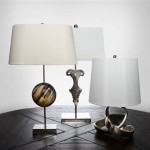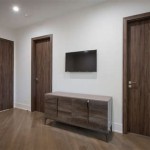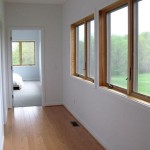Rendering Interior Design: Bringing Visions to Life
Interior design is a field that thrives on visual communication. While sketches and floor plans are essential tools, they often fall short in conveying the complete essence of a space. This is where interior design rendering comes into play. Rendering transforms conceptual designs into lifelike, three-dimensional visualizations, offering a powerful tool for designers, clients, and stakeholders alike.
Rendering allows designers to showcase their vision with unparalleled clarity. It bridges the gap between imagination and reality, enabling clients to experience the proposed design before construction begins. This interactive approach fosters effective communication, minimizes misunderstandings, and ensures that the final product aligns perfectly with the client's expectations.
Key Advantages of Interior Design Rendering:
1. Enhanced Visual Communication:
Rendering elevates the communication process to new heights. By presenting a realistic representation of the space, designers can effectively convey the chosen materials, textures, furniture, lighting, and color palettes. Clients can fully grasp the ambiance, layout flow, and overall aesthetic, enabling informed decision-making.
2. Improved Design Exploration:
Rendering empowers designers to explore various design iterations and experiment with different elements. They can visualize the impact of different furniture arrangements, lighting configurations, and material choices, allowing for optimal design exploration and refinement. This iterative process leads to a more comprehensive and refined design solution.
3. Enhanced Client Engagement:
Rendering fosters a strong connection between designers and clients. Visualizations evoke emotions and reactions, creating a shared understanding of the design vision. Clients can actively participate in the design process, providing feedback and contributing to the final product. This collaborative approach ensures client satisfaction and a successful outcome.
Techniques Used in Interior Design Rendering:
Interior design rendering encompasses a variety of techniques, each offering unique capabilities:
1. 3D Modeling:
The foundation of most renderings, 3D modeling involves creating digital representations of objects and environments. Designers utilize software like SketchUp, 3ds Max, and Revit to build detailed models, capturing the precise dimensions, shapes, and textures of each element.
2. Texturing:
Texturing adds realism and depth to the rendered scene. Designers apply digital textures to surfaces, simulating the appearance of wood, stone, fabrics, and other materials. This process creates a sense of authenticity and richness, enhancing the visual impact.
3. Lighting:
Lighting plays a crucial role in shaping the mood and atmosphere of a space. Renderings incorporate different lighting sources, from natural sunlight to artificial fixtures, to create realistic shadows, reflections, and highlights. This meticulous attention to lighting contributes to the overall visual appeal and enhances the perceived ambiance.
4. Post-Production:
After the initial rendering process, designers often employ post-production techniques to further enhance the final image. These techniques include color correction, image compositing, and adding details such as people or accessories. Post-production refines the visual aesthetic and creates a polished and professional-looking final product.
Benefits of Using Professionals:
While many rendering tools are available, professional rendering services offer significant advantages:
1. Expertise and Experience:
Professional renderers possess extensive knowledge of rendering techniques, software, and industry best practices. They can create high-quality visualizations that accurately reflect the designer's intent and meet industry standards.
2. Customization and Creativity:
Professional renderers can tailor their services to meet specific design requirements. They can incorporate custom elements, create unique textures, and implement complex lighting scenarios to achieve a truly bespoke rendering.
3. Time Efficiency:
Outsourcing rendering tasks allows designers to focus on their core expertise, such as conceptual design and client interaction. Professional renderers handle the technical aspects, ensuring timely delivery of high-quality images and freeing up valuable time for other design priorities.

What Is Interior Design Hand Rendering Tallbox Guide

How 3d Rendering For Interior Design Can Improve Profits Guide

How Can 3d Rendering Revolutionize Interior Design

Rendering In Interior Design The Ultimate Guide Applet3d

How 3d Rendering Is Transforming Interior Design

Importance Of 3d Rendering In Interior Design Shalin Designs

Interior Design Rendering Chaos

What Is Interior Design Hand Rendering Tallbox Guide

Let S Know More About Interior 3d Rendering Applet3d

Interior Design Rendering A Powerful S Tool For Home Professionals Cedreo








